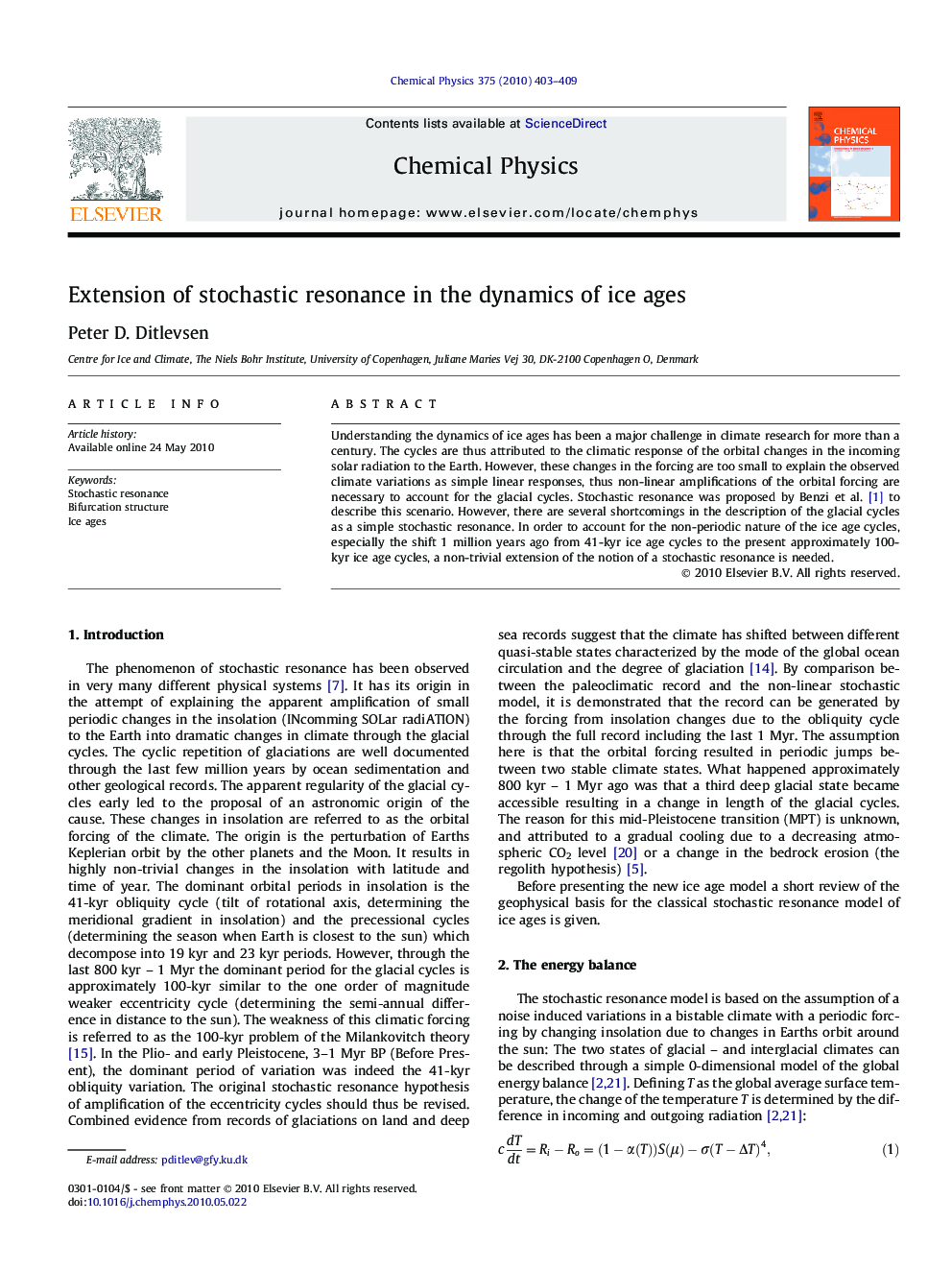| Article ID | Journal | Published Year | Pages | File Type |
|---|---|---|---|---|
| 5374995 | Chemical Physics | 2010 | 7 Pages |
Understanding the dynamics of ice ages has been a major challenge in climate research for more than a century. The cycles are thus attributed to the climatic response of the orbital changes in the incoming solar radiation to the Earth. However, these changes in the forcing are too small to explain the observed climate variations as simple linear responses, thus non-linear amplifications of the orbital forcing are necessary to account for the glacial cycles. Stochastic resonance was proposed by Benzi et al. [1] to describe this scenario. However, there are several shortcomings in the description of the glacial cycles as a simple stochastic resonance. In order to account for the non-periodic nature of the ice age cycles, especially the shift 1 million years ago from 41-kyr ice age cycles to the present approximately 100-kyr ice age cycles, a non-trivial extension of the notion of a stochastic resonance is needed.
Graphical abstractThe ice age dynamics have existed in two modes of operation, the 41-kyr periods until 1 million years ago and the approximately 100-kyr periods of the present state. These correspond to two different stability diagrams, where the approximate periodicity of the latter period could be due to a generalized stochastic resonance.Download full-size image
